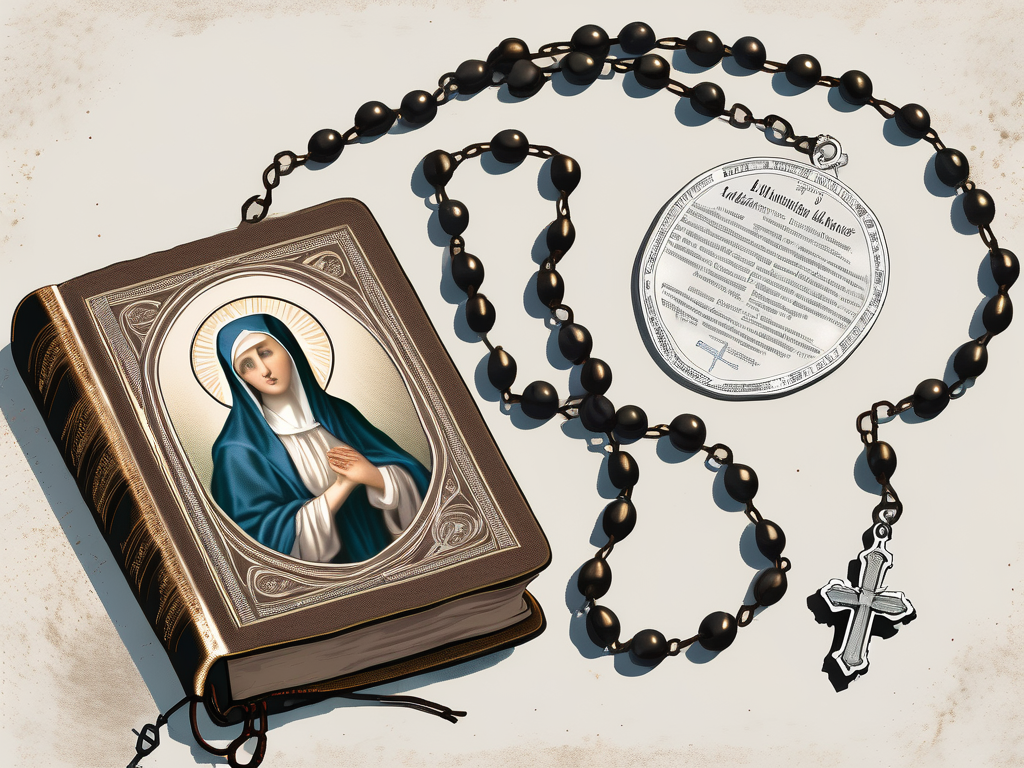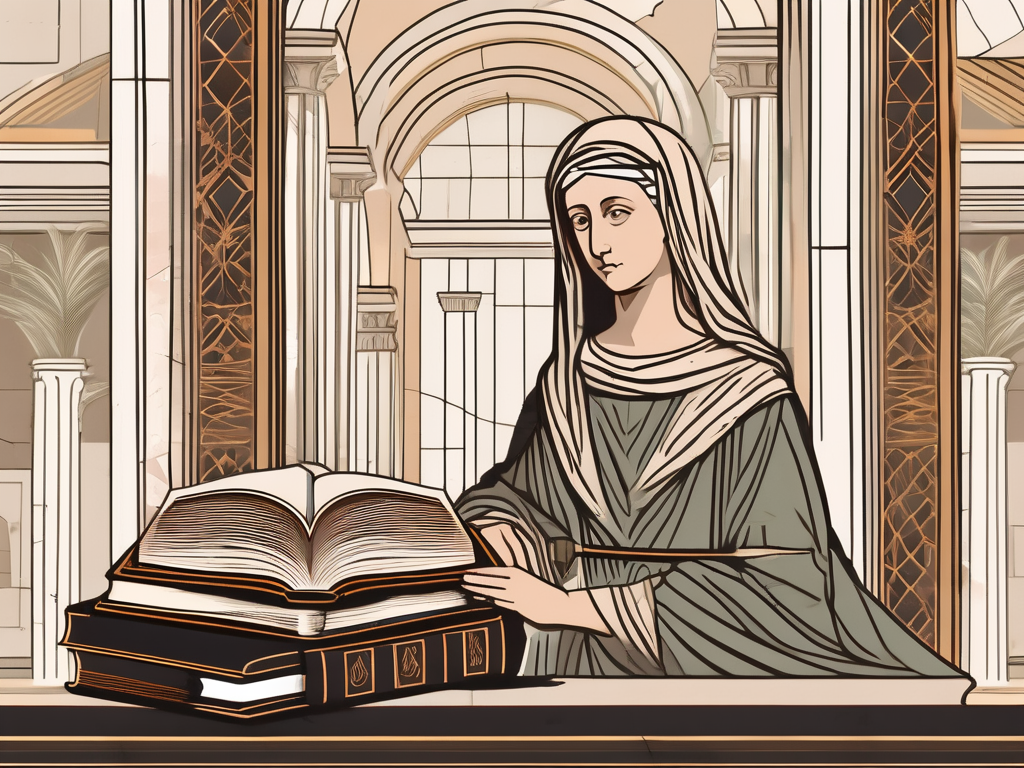Saint Catherine Labouré was a woman of great faith and devotion, whose life was filled with miracles and divine encounters. Born into a humble family in the French countryside, Catherine’s early years laid the foundation for her remarkable spiritual journey.
Early Life of Catherine Labouré
Catherine Labouré, a woman whose life would later be marked by extraordinary spiritual experiences, was born on May 2, 1806, in the quaint village of Fain-les-Moutiers, Burgundy, France. She was the ninth child of a farming family, and her parents, Pierre and Louise Labouré, were hardworking and devout Catholics who instilled in her a deep love for God from a young age.
Growing up in a close-knit Catholic family, Catherine was nurtured in an environment where prayer and devotion were central to everyday life. Her parents’ unwavering faith inspired her to seek a deeper connection with God, and she often found solace in the quiet moments spent in the family’s small chapel, where she would pour out her heart in prayer.
Birth and Family Background
Catherine’s birth into the Labouré family was a joyous occasion, celebrated by her parents and siblings. As the ninth child, she was welcomed with open arms and surrounded by love from the moment she entered the world. Her family, though humble in their circumstances, possessed a wealth of faith and a deep sense of gratitude for the blessings they received.
The Labouré family’s roots in Fain-les-Moutiers ran deep, with generations of farmers tilling the land and nurturing the soil. Their connection to the earth and their reliance on God’s providence through the changing seasons shaped their worldview and instilled in them a sense of humility and gratitude for the simple joys of life.
Childhood and Education
Catherine’s childhood was a simple but joyful one. She spent her days playing in the fields surrounding her family’s farmhouse, her laughter echoing through the countryside as she chased butterflies and picked wildflowers. Despite the demands of farm life, her parents recognized the importance of education and ensured that Catherine attended a local school.
At school, Catherine received a basic education, learning to read, write, and perform simple arithmetic. But as she sat at her desk, her mind often wandered to thoughts of God and the desire to know Him more intimately. She longed for something more than the lessons taught in the classroom, yearning to dedicate her life entirely to serving God.
As Catherine grew older, her longing for a deeper connection with God intensified. She sought guidance from her parish priest, who recognized her fervent spirit and recommended that she consider entering religious life. This suggestion sparked a fire within Catherine’s heart, and she began to explore the possibility of becoming a nun.
In her pursuit of a religious vocation, Catherine immersed herself in prayer and sought the counsel of trusted spiritual advisors. She longed to find a community where she could devote herself fully to God and serve others with love and compassion. Little did she know that her journey would lead her to a series of extraordinary encounters with the Blessed Virgin Mary, forever changing the course of her life.
Catherine’s Spiritual Journey
In her early twenties, Catherine experienced a profound calling from above, urging her to devote her life to religious service. This calling led her to Paris, where she would join the Daughters of Charity, a community founded by Saint Vincent de Paul and Saint Louise de Marillac.
Call to Religious Life
Guided by her unwavering faith and the example set by the Sisters of Charity, Catherine discerned her vocation and felt compelled to dedicate herself to helping those in need. Her desire to serve God and her fellow human beings became the driving force behind her decision to enter religious life.
Catherine’s journey towards religious life was not without its challenges. She faced doubts and uncertainties, questioning whether she was truly meant for this path. However, through prayer and reflection, she found solace in the belief that her calling was a divine gift, and that she had a unique purpose to fulfill.
As Catherine delved deeper into her spiritual journey, she sought guidance from experienced mentors within the Daughters of Charity. These wise and compassionate sisters provided her with invaluable support, helping her navigate the complexities of religious life and offering insights into the profound joy that comes from selfless service.
Joining the Daughters of Charity
In April 1830, Catherine took her vows and became a member of the Daughters of Charity. She embraced a life of humility, poverty, and love for the poor. As she settled into her new community, little did she know that her life was about to be forever changed by a heavenly encounter.
Catherine’s days were filled with various duties and responsibilities within the community. She tirelessly worked in hospitals, orphanages, and schools, attending to the needs of the sick, the abandoned, and the marginalized. Her unwavering dedication and compassion earned her the admiration and respect of her fellow sisters.
In her interactions with the poor and the suffering, Catherine witnessed firsthand the harsh realities of poverty and injustice. These experiences ignited a fire within her, compelling her to advocate for social change and to fight for the rights and dignity of every human being.
As Catherine’s reputation for her selfless service and unwavering commitment grew, she became a source of inspiration not only within her community but also among the wider society. People from all walks of life sought her guidance and sought solace in her words of wisdom.
Throughout her spiritual journey, Catherine’s faith continued to deepen. She found solace and strength in prayer, spending hours in contemplation and communion with God. Her spiritual insights and profound experiences became the foundation of her teachings, which continue to inspire and guide countless individuals to this day.
The Miraculous Medal Vision
On July 18, 1830, the Virgin Mary appeared to Catherine in a vivid vision that would profoundly impact her life and the lives of countless others.
As Catherine knelt in prayer, she felt a sudden warmth enveloping her. The room seemed to glow with an otherworldly light, and a sense of peace washed over her. Then, in an instant, the room transformed into a celestial realm, and there stood the Blessed Virgin Mary.
The Encounter with Virgin Mary
In the vision, Catherine saw the Blessed Virgin Mary standing on a globe, with rays of light streaming from her hands. The radiance emanating from Mary was so brilliant that it illuminated the entire room. Catherine could hardly believe her eyes as she gazed upon the ethereal beauty before her.
Mary’s eyes were filled with compassion and love as she spoke to Catherine. Her voice was gentle, yet resolute, as she conveyed a message of hope and divine intervention. She revealed to Catherine that she was chosen by God to bring forth a powerful sacramental, a medal that would serve as a tangible connection to her heavenly presence.
The Design and Significance of the Medal
True to Mary’s request, Catherine helped bring the design of the Miraculous Medal to life. The medal featured the image of the Blessed Virgin Mary, surrounded by the words “O Mary, conceived without sin, pray for us who have recourse to thee.” This simple yet profound design encapsulated the essence of Mary’s role as the Immaculate Conception.
The rays of light that emanated from Mary’s hands on the medal symbolized the abundant graces and blessings that she bestows upon those who seek her intercession. The globe beneath her feet represented her universal motherhood, encompassing all of humanity in her loving embrace.
The Miraculous Medal quickly became a cherished symbol of faith, hope, and protection. Countless individuals, from all walks of life, have worn this medal with unwavering devotion, experiencing the miraculous power of Mary’s intercession. It has been a source of comfort in times of distress, a beacon of light in moments of darkness, and a tangible reminder of Mary’s unwavering love for humanity.
Through the years, numerous accounts of miraculous healings, conversions, and spiritual graces have been attributed to the wearing of the Miraculous Medal. Its significance extends far beyond its physical form, as it serves as a conduit for the faithful to connect with the divine and experience the profound love and mercy of Mary.
Today, the Miraculous Medal continues to be a cherished sacramental for millions around the world. It is a testament to the enduring power of faith and the boundless love of the Blessed Virgin Mary. As we wear this medal, we are reminded of Mary’s presence in our lives, her intercession on our behalf, and the countless miracles that have unfolded through her maternal care.
Other Miraculous Experiences
Beyond the vision of the Miraculous Medal, Catherine Labouré’s life was marked by various other extraordinary encounters and miracles.
Catherine’s Prophecies
Throughout her life, Catherine received several prophecies concerning the future of the Catholic Church and the world. These prophetic insights were both a source of comfort and a call to action for Catherine, who prayerfully shared these messages with her superiors.
Healing Miracles Attributed to Catherine
Catherine’s devotion to God and her intercession for those in need brought about remarkable healings. Many people sought her prayers, and numerous testimonies exist of extraordinary healings and spiritual graces received through her intercession.
Catherine’s Later Life and Death
After spending a considerable part of her life working as a nurse and caring for the sick, Catherine’s later years were marked by quiet contemplation and continued dedication to serving God.
Her Life as a Nurse
Catherine became a skilled nurse, tending to the physical and spiritual needs of the sick and dying. Her compassionate care and soothing presence brought comfort to countless suffering souls who found solace in her tender care.
Her Final Years and Death
As Catherine grew older, her health declined, but her faith remained steadfast until the end. She passed away peacefully on December 31, 1876, leaving a legacy of faith, miracles, and devotion that continues to inspire people around the world.
In conclusion, the life of Saint Catherine Labouré serves as an enduring testament to the power of faith and the transformative influence of divine encounters. Her early life and spiritual journey, culminating in the vision of the Miraculous Medal, demonstrate a profound connection with God and a profound desire to share His love with the world. Through the miracles attributed to her intercession and her unwavering commitment to serving the sick, Catherine’s life serves as an inspiration for all who seek to walk in the footsteps of Christ and make a difference in the lives of others.












